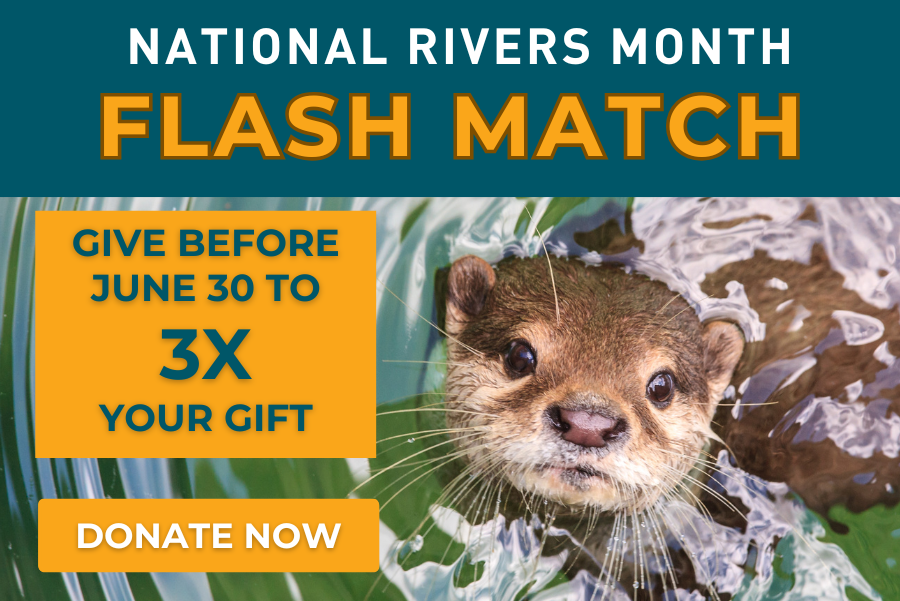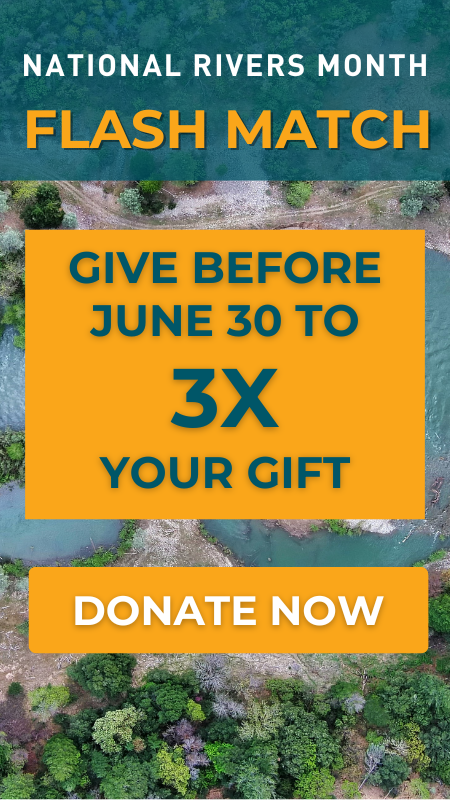Smith River Among America’s Most Endangered Rivers® of 2015
April 7, 2015
Contact:
(Washington, DC)- American Rivers named Montana’s Smith River among America’s Most Endangered Rivers® of 2015 today, shining a national spotlight on the threat a proposed copper mine poses to the river’s clean water and nationally renowned wild trout fishery.
“The America’s Most Endangered Rivers report is a call to action to save rivers that face a critical decision point in the next year,” said Scott Bosse of American Rivers. “The Smith River is one of the most beloved rivers in Montana. It’s where countless Montanans have made unforgettable memories. We shouldn’t sacrifice its clean water and wild trout fishery so a foreign-owned company can build a copper mine in its headwaters.”
A Canadian mining company, Tintina Resources Inc., is proposing to develop a massive copper mine on 12,000 acres of land adjacent to Sheep Creek, a major headwater stream that produces half of the tributary-spawning trout in the Smith River drainage. The mine threatens river health and clean water with acid mine drainage and toxic heavy metals. American Rivers and its partners called on Montana Governor Steve Bullock to deny state permits for the mine unless it can be designed in a way that eliminates any risk to the river’s water quality and fish and wildlife populations.
“The Smith River offers one of the greatest backcountry angling experiences available anywhere in the United States,” said Jim Klug, owner of Yellow Dog Flyfishing Adventures, an international flyfishing travel company based in Bozeman. “It’s incredibly special to Montanans and to the thousands of visitors annually who take outfitted trips to experience its magnificent scenery and solitude. As a business owner who relies on healthy rivers for my living, it’s important to me that jobs in the outdoor recreation industry not be sacrificed to create jobs in the mining industry.”
“I don’t necessarily oppose the mine, but it shouldn’t be built if it comes at the expense of the Smith River’s water quality, trout fishery, and recreational values,” said Deb Davidson, a Montanan whose family owns land along the Smith River.
The Smith River flows for 60 miles through a stunning limestone canyon between the Little Belt and Big Belt Mountains, emptying into the Missouri River just south of Great Falls. It is home to healthy populations of brown and rainbow trout that draw anglers in search of solitude from across the country. Among the wildlife species that frequent the Smith River corridor are bald and golden eagles, osprey, black bear, moose, elk, and mule and whitetail deer. Recreational fishing and floating on the Smith generates an estimated $4.5 million annually in revenue for outfitters and surrounding communities.
The annual America’s Most Endangered Rivers report is a list of rivers at a crossroads, where key decisions in the coming months will determine the rivers’ fates. Over the years, the report has helped spur many successes including the removal of outdated dams, the protection of rivers with Wild and Scenic designations, and the prevention of harmful development and pollution. Among the Montana rivers that have benefited from past listings in the report are the Big Blackfoot, North Fork Flathead, and Upper Yellowstone.
“This year’s report underscores the importance of healthy rivers to each and every American,” said Irvin. “Whether it’s for clean drinking water, ample water supplies for farms and cities, abundant fish and wildlife, or iconic places vital to our heritage, we all have a stake in protecting our nation’s rivers.”
About American Rivers
American Rivers protects wild rivers, restores damaged rivers, and conserves clean water for people and nature. Since 1973, American Rivers has protected and restored more than 150,000 miles of rivers through advocacy efforts, on-the-ground projects, and an annual America’s Most Endangered Rivers® campaign. Headquartered in Washington, DC, American Rivers has offices across the country and more than 250,000 members, supporters, and volunteers.
Rivers connect us to each other, nature, and future generations. Find your connections at AmericanRivers.org, Facebook.com/AmericanRivers, and Twitter.com/AmericanRivers.


